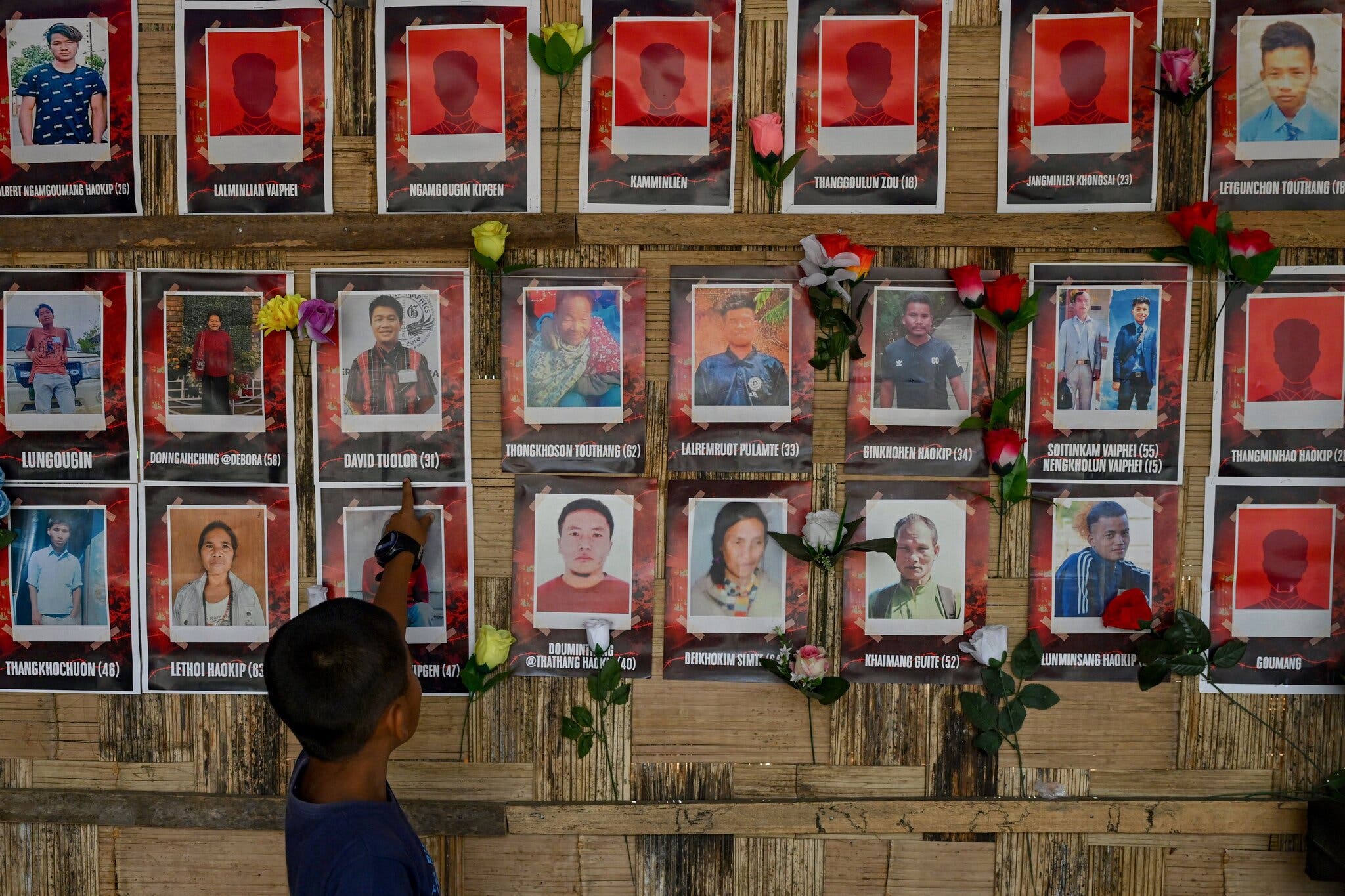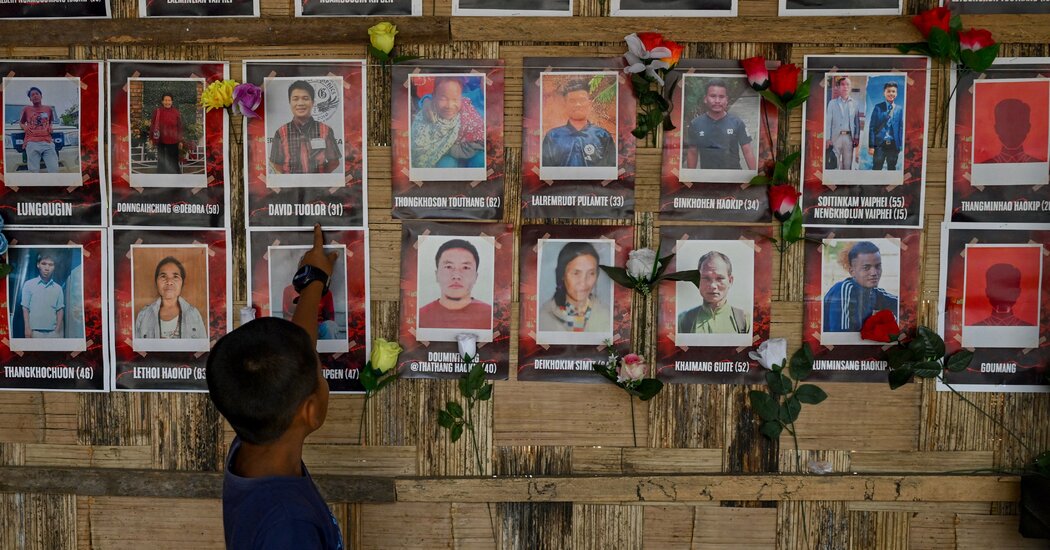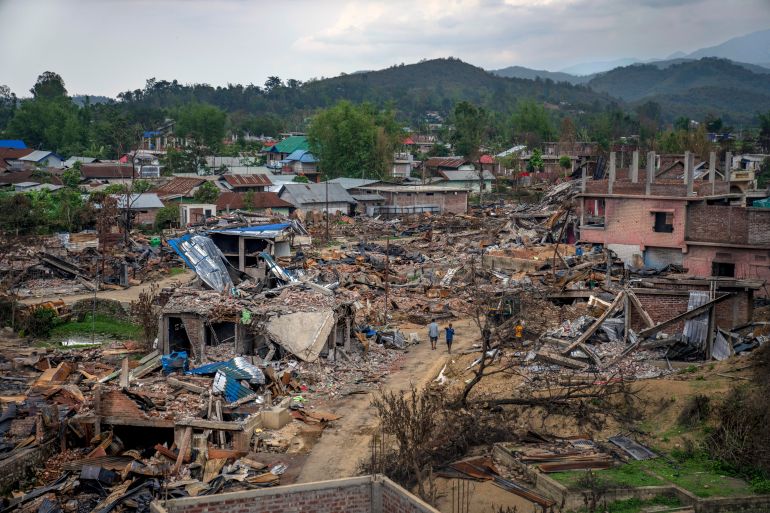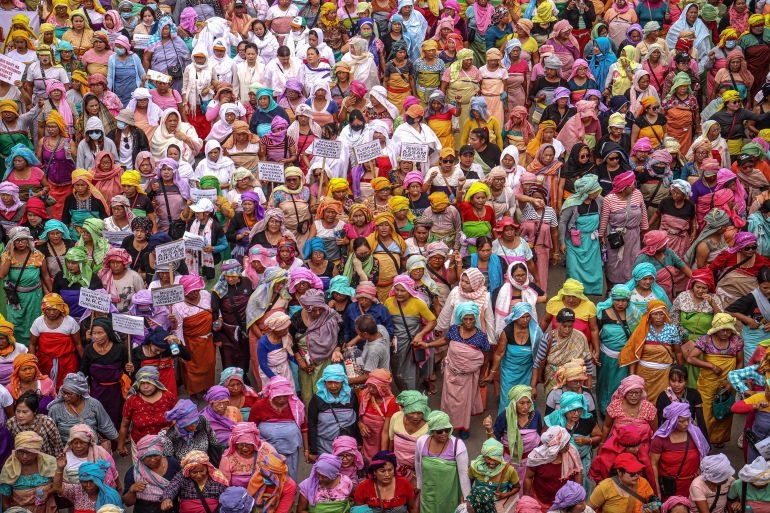beijingwalker
ELITE MEMBER

- Joined
- Nov 4, 2011
- Messages
- 65,191
- Reaction score
- -55
- Country
- Location
India Is on the Brink, Modi’s Hindu-Supremacist Politics Are Pushing India Into A War Zone
Aug. 9, 2023
At a memorial in the Churachandpur district of the northeastern Indian state of Manipur, portraits of victims who died during recent ethnic clashes between the predominantly Hindu Meitei majority and the mainly Christian Kuki minority.Credit...Arun Sankar/Agence France-Presse — Getty Images
By Debasish Roy Chowdhury
Indian social media is a brutal place, a window on the everyday hatred and violence that has come to colonize the country in the nine years since Prime Minister Narendra Modi’s government came to power. But the images from the northeastern state of Manipur that began circulating in July were shocking even by those low standards.
A video clip showed two women being sexually assaulted as they were paraded, naked, by a crowd of men who later gang-raped one of them, according to a police complaint. The horrific scene was part of an explosion of ethnic violence since May that has turned the small state into a war zone, killing more than 150 people and displacing tens of thousands.
The state has a long history of ethnic animosities that predate Mr. Modi’s rise. But the fuse for the current unrest in Manipur was lit by the politics of Hindu supremacy, xenophobia and religious polarization championed by his Bharatiya Janata Party.
India is a diverse nation, crisscrossed by religious, ethnic, caste, regional and political fault lines. Since Mr. Modi took office in 2014, his ruling party has torn those asunder with dangerous exclusionary politics intended to charge up the party’s base and advance its goal of remaking India’s secular republic into a majoritarian Hindu state. The repugnant nature of this brand of politics has been clear for some time, but the situation in Manipur shows what’s ahead for India: The world’s most populous country is slowly degenerating into a conflict zone of sectarian violence.
Image

Christian activists take part in a candlelight vigil in protest over sexual violence against women and the ongoing ethnic violence in India’s northeastern state of Manipur, during a demonstration in Amritsar, India.Credit...Narinder Nanu/Agence France-Presse — Getty Images
The violent impact of his party’s polarizing politics is acutely felt in India’s heartland, too. The area near a tech and finance hub on the outskirts of New Delhi was rocked by violence last week as Hindu supremacists staging a religious procession clashed with Muslims. Mosques were attacked, an imam was killed, businesses were burned and looted, and hundreds of Muslims have fled.
In tandem with the B.J.P.’s demonizing of India’s nearly 200 million Muslims, television, cinema and social media are deployed to radicalize the Hindu majority, pumping out a steady stream of Islamophobia and vile dog whistles. Extremist groups, at least one of which appears to have received the public support of the prime minister, run amok. Muslims have been arrested for praying, had their livelihoods and businesses destroyed and their homes razed. Bulldozers, used to demolish homes, have become an anti-Muslim symbol, proudly paraded by B.J.P. supporters at political rallies.
As John Keane and I argue in our book “To Kill a Democracy: India’s Passage to Despotism,” it’s a signature tactic of modern-day despots: tightening their grip on power by redefining who belongs to the polity and ostracizing others. In the ultimate subversion of democracy, the government chooses the people, rather than the people choosing the government.
India is already a complex federation of regional identities, many of which consider themselves distinct from Hindi-speaking north India, the power base of Mr. Modi’s party. This federal structure is held together by delicate bonds of social and political accommodation. But they are fraying fast under Mr. Modi, who has no appetite for either, shrinking the space for nonviolent political contestation. Some regional political parties see the Bharatiya Janata Party’s centralizing and homogenizing Hindu-first thrust as a cultural imposition from outside and are assailing it with the same divisive us-versus-them vocabulary.
Due to its giant and growing population, India will become more important to the rest of the world, both geopolitically and due to the promise of its massive market. And so Western leaders like President Biden — who staged a lavish welcome for Mr. Modi on a state visit to Washington in June — engage with the prime minister, downplaying his government’s assaults on liberalism.
But a political strategy of conspicuous humiliation and subjugation of ethnic and religious minorities that make up around one-fifth of the population is dangerously deluded. India can be either a conflict zone or an economic powerhouse — not both. It is increasingly clear which of those two destinies awaits the country.

Opinion | India Is on the Brink
Narendra Modi’s intolerant brand of Hindu supremacy threatens to turn India into a conflict zone.






